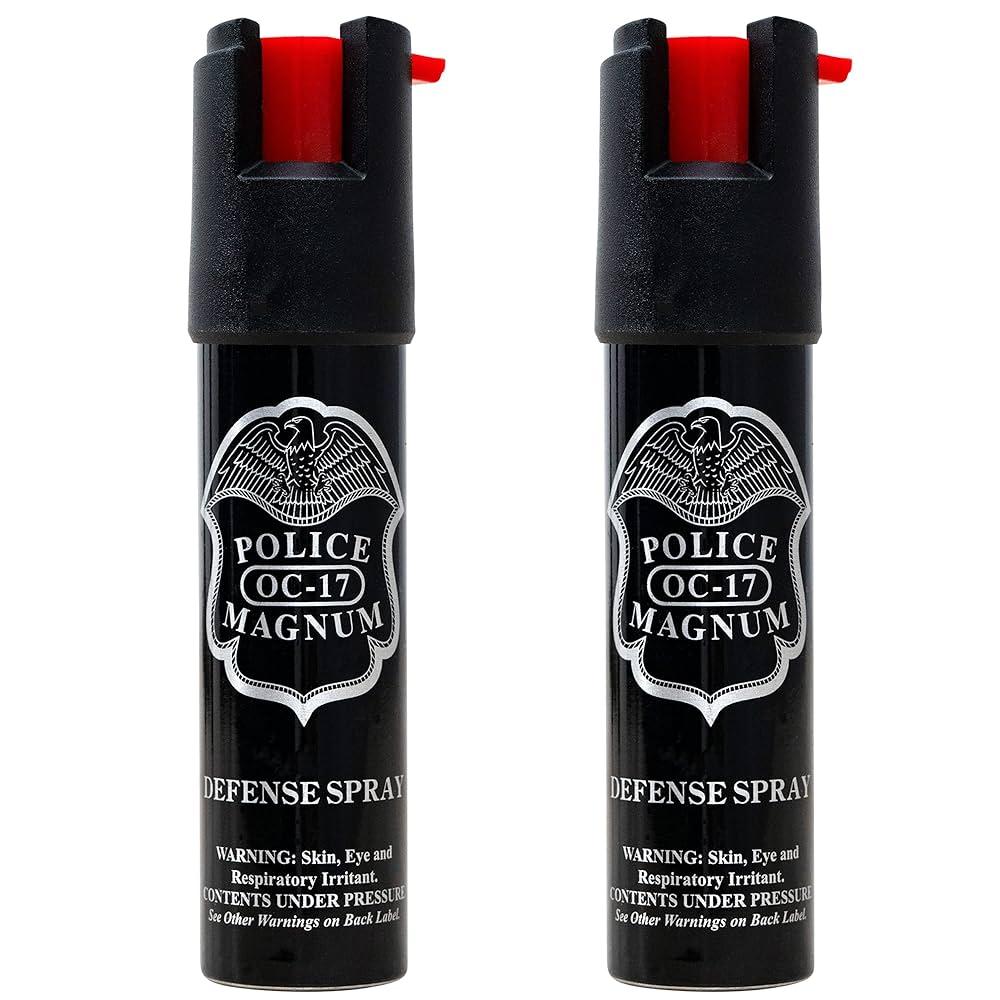Table of Contents
- Understanding the Chemical Composition and Activation of Pepper Spray
- The Physiological Effects on the Human Body During Exposure
- Safe and Effective Use Guidelines for Maximum Self-Defense Protection
- Legal Considerations and Responsible Pepper Spray Ownership
- In Retrospect
Understanding the Chemical Composition and Activation of Pepper Spray
At the heart of pepper spray lies oleoresin capsicum (OC), a natural oily extract derived from hot chili peppers. This compound contains capsaicin, the active ingredient responsible for intense irritation upon contact with mucous membranes. The concentration of capsaicin typically ranges between 0.18% and 3%, which determines the spray’s potency. When released, this chemical binds to sensory nerve receptors in the eyes, nose, and skin, triggering an immediate burning sensation, inflammation, and temporary blindness. It is this rapid, debilitating response that makes pepper spray an effective non-lethal self-defense tool.
The activation mechanism is equally critical for effective deployment. Pepper spray usually comes in pressurized canisters that disperse a fine mist, stream, or fog. This delivery method ensures the OC particles stay suspended in the air long enough to affect the target before dispersing. Key components include:
- Propellant gas, which pressurizes the canister
- Carrier solvents that maintain chemical stability
- Nozzle design, optimizing spray pattern for accuracy and coverage
The Physiological Effects on the Human Body During Exposure
Upon exposure, pepper spray’s active compound, capsaicin, triggers an intense inflammatory response on mucous membranes. This reaction causes immediate burning sensations in the eyes, nose, throat, and skin, overwhelming the sensory nerve endings. Victims typically experience involuntary eye closure, profuse tearing, and severe coughing as the respiratory pathways narrow, making it difficult to breathe. The spray’s impact on the nervous system results in a temporary incapacitation by disrupting normal sensory and motor functions, creating a window of opportunity for self-defense.
The body’s autonomic nervous system then ramps up the fight-or-flight response, releasing adrenaline that can cause increased heart rate and elevated blood pressure. These physiological changes accompany symptoms such as:
- Swelling and irritation of the corneas and eyelids
- Disorientation from intense pain and difficulty focusing
- Temporary loss of vision due to eye closure and tearing
- Spasmodic coughing and shortness of breath
Safe and Effective Use Guidelines for Maximum Self-Defense Protection
To harness the full potential of your pepper spray while ensuring personal safety, it’s essential to follow best practices with precision. Always store your spray in an accessible yet secure location such as a front pocket or a bag compartment designed for quick retrieval. Maintain a firm grip and familiarize yourself with the spray’s operation before an emergency arises; practicing aim and understanding the spray pattern can significantly enhance your response time. Additionally, be aware of wind direction to prevent self-contamination, which can cause temporary incapacitation.
When deploying pepper spray, remember that it is a tool for defense, not aggression. Use it only when there is a clear threat to your safety. After use, seek immediate safety and avoid touching your face, as residues can linger on your hands and cause irritation. Consider carrying the spray legally and responsibly, abiding by local regulations. Here are key reminders for optimal use:
- Check expiration dates regularly to ensure effectiveness.
- Use short bursts instead of prolonged sprays to conserve product and prevent overspray.
- Train periodically with inert practice sprays to build confidence and accuracy.
- Keep a backup option like a whistle or personal alarm for added deterrence.
Legal Considerations and Responsible Pepper Spray Ownership
Owning and carrying pepper spray comes with a set of legal responsibilities that vary widely depending on your location. Before purchasing or using pepper spray, it is vital to familiarize yourself with local laws, as regulations can dictate who may carry it, how it should be stored, and the situations in which its use is justified. Some jurisdictions require permits, limit the size or concentration of the spray, and prohibit its use outside genuine self-defense scenarios. Failure to comply with these legal standards can result in serious legal consequences, including fines or criminal charges.
Responsible ownership extends beyond legality and encompasses ethical considerations. Users should ensure that pepper spray is handled safely and kept out of reach of children or unauthorized individuals. It’s also essential to regularly check expiration dates and practice proper deployment techniques to avoid accidental exposure or ineffective use during emergencies. Maintaining respect for its power means understanding that pepper spray is a tool intended to de-escalate threatening situations-never to be used as a means of intimidation or aggression.
- Verify local laws about possession and use.
- Store in a secure, temperature-stable environment.
- Use only in legitimate self-defense scenarios.
- Train periodically to ensure confident handling.
- Keep the device accessible but away from children.
In Retrospect
In understanding how pepper spray works, it’s clear that this tool offers a powerful means of self-defense grounded in science. By triggering an intense inflammatory response, it temporarily incapacitates an attacker and provides a critical window to escape danger. While pepper spray is an effective deterrent, it’s important to use it responsibly and be aware of local regulations. Empowered with knowledge and preparedness, individuals can enhance their personal safety with confidence and caution. Stay informed, stay safe, and remember that self-defense is as much about awareness as it is about the tools we carry.Check Our Other Blogs
- StunGun – Your Trusted Source for Stun Guns, Laws, and Self-Defense Tips
- PepperSprayLaws – Your Trusted Resource for Pepper Spray Information
- StunGunLaws – Your Trusted Guide to Stun Gun Legality and Safety




